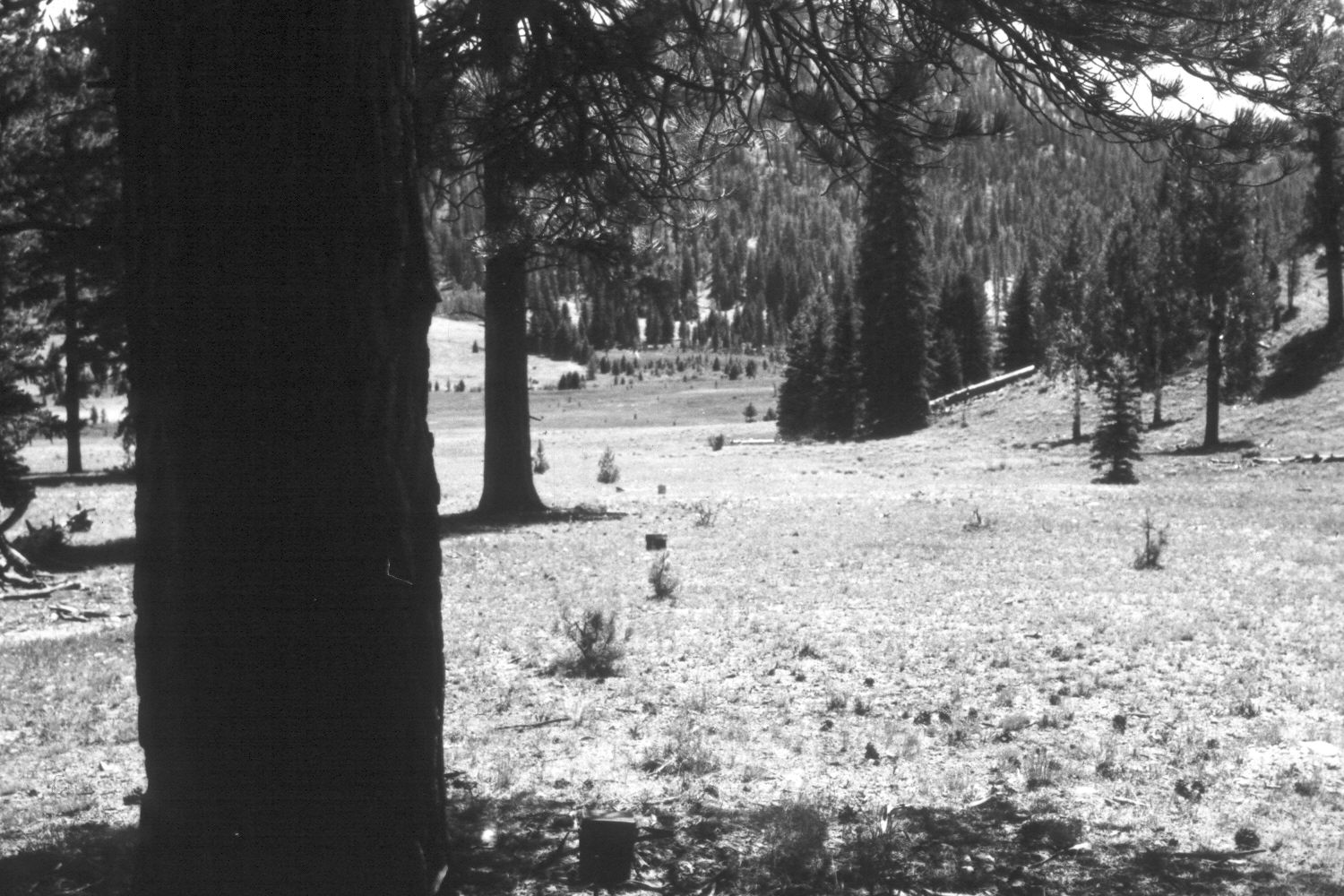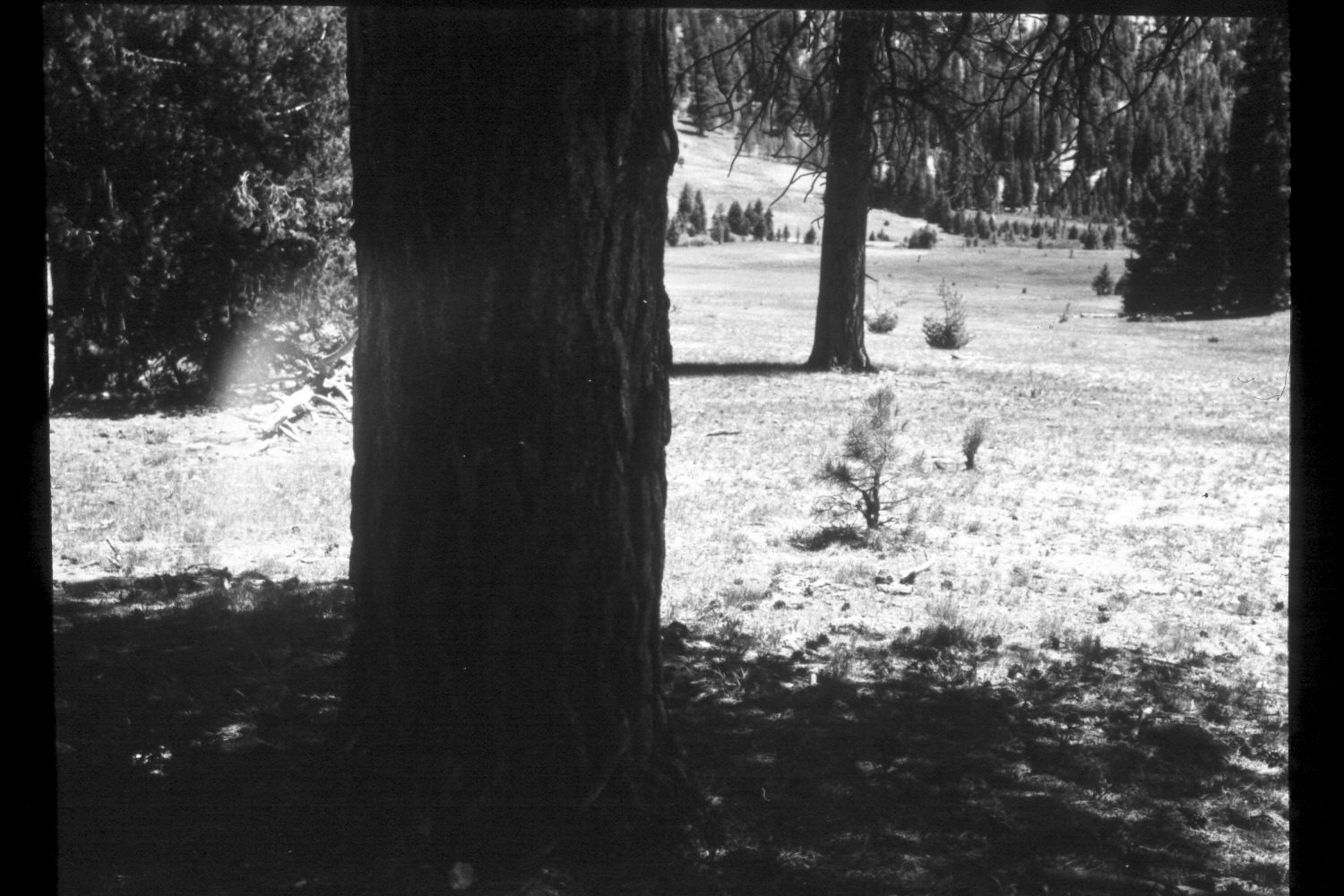Upper Kanab Creek
1943

1946

1953

Description:
Plate 249X. Upper Kanab Creek 1943-1946-1953-1961-1979-2003 The Upper Kanab Creek Photo Plot Transect was established in 1943 and reread in 1946, 1953, 1961, and 1979. The transect was set-up with two legs starting at a common point near a large ponderosa pine. The first line runs 950 feet in a southerly direction, while the second leg runs 300 feet in a westerly direction. Initial range conditions were described as poor with a downward trend. “The more desirable grasses are scarcely holding their own. Kentucky bluegrass is gaining ground on the former dry meadow and the less desirable and worthless forbs have increased considerably.” Rabbitbrush and snakeweed (Gutierrezia sarothrae) were described as increasing and a “further indication of a downward trend.” Bare soil areas were described as “excessive” and “dense erosion pavement [was] conspicuous.” Despite a change from joint use by domestic sheep and cattle to a cattle only allotment, the range trend was still considered down in 1961. During the early 1970’s, the upper part of the transect was logged and “the soil severely disturbed.” The Forest Service also built a new road across the center of the longest leg of the transect. Nevertheless, in 1979 Dr. Jim Bowns, range ecologist at Southern Utah University, noted that range conditions had improved to “high fair to low good with an upward trend” (unpublished reports in the range files on the Panguitch Ranger District, Dixie National Forest, Panguitch, UT). Plate 249x is viewed south from the transect starting point at the base of the large ponderosa pine along the transects’ longest leg. The transect centerline is just to the right of the second large ponderosa pine. That second tree, however, was logged during the early 1970’s, as were the upper parts of the transect. Nonetheless, conifers have increased, especially ponderosa pine and spruce. The most common grass in the foreground of the 2003 retake was smooth brome, which apparently was planted after the area was logged. Needle and thread, as well as other native grass also appear to have increased, and there was no evidence of accelerated soil erosion in 2003. The area was not grazed by cattle when rephotographed in 2003.
Photo Information:
U.S. Forest Service photographs (unnumbered) taken by Ray J. Davis on August 19, 1943; Walter Cottam on August 20, 1946; I.H. Johnson on June 23, 1953; I.H. Johnson on August 3, 1961; and Jim Bowns and Al Tait on July 20, 1979; retake by Charles E. Kay on August 5, 2003 - - Photo No. 5210-26. Original negatives, photographs, and narrative reports held in the range files on the Panguitch Ranger District, Dixie National Forest, Panguitch, UT.
Vegetative Community:
Dry Meadow, Conifer
Location:
South West: Section 10, Range 4 ½ West, Township 38 South; UTM of the transect starting point 383150E, 4152800N; elevation 8,150 ft.


 Utah 4-H & Youth
Utah 4-H & Youth